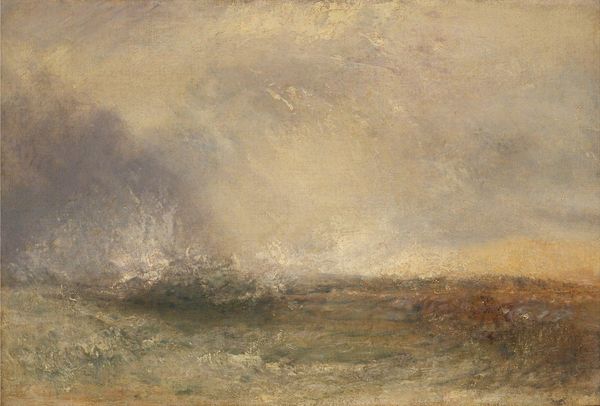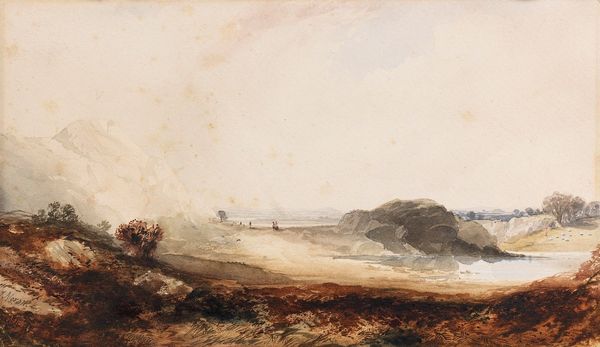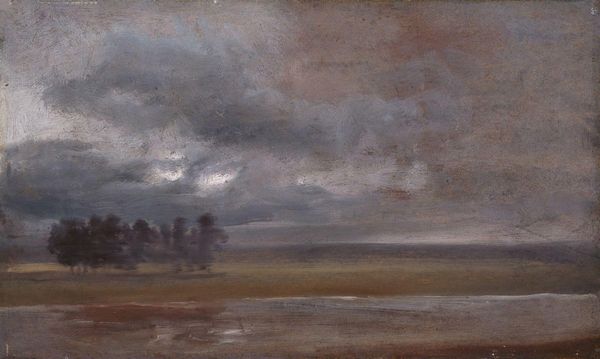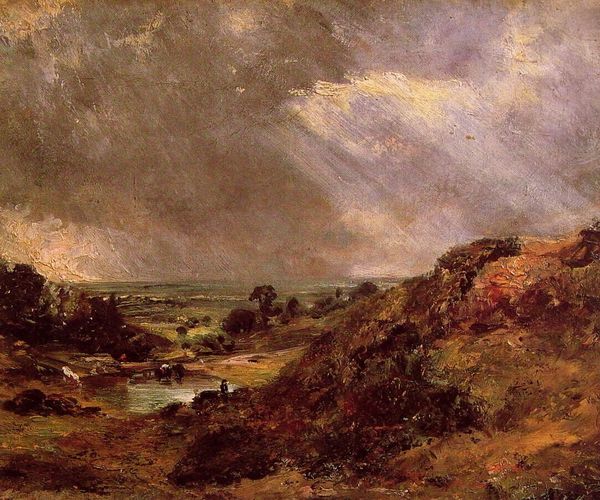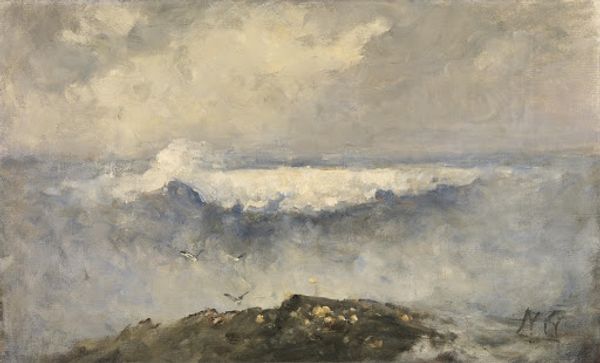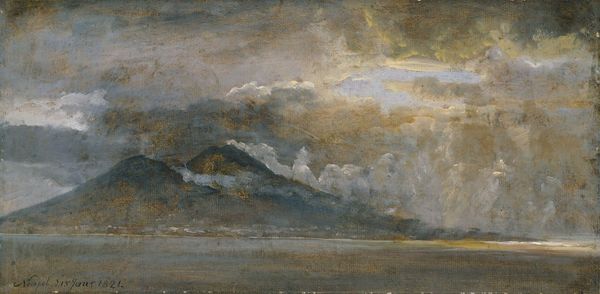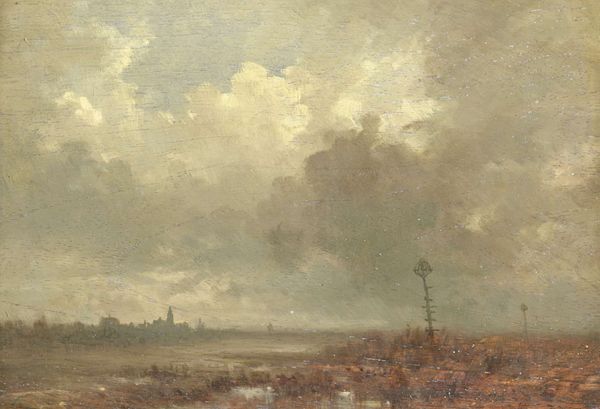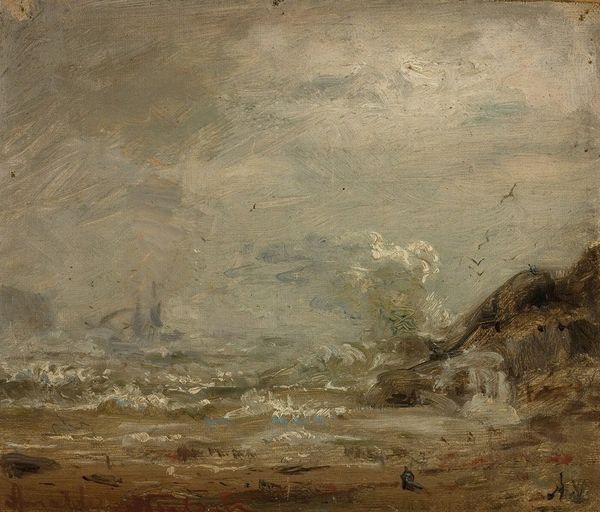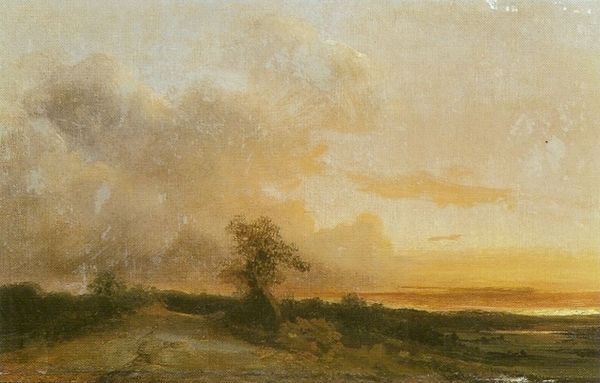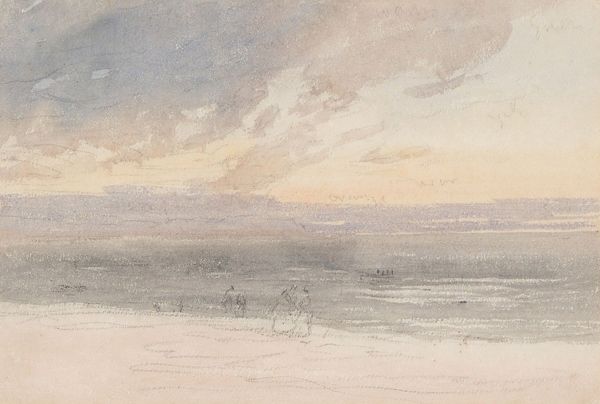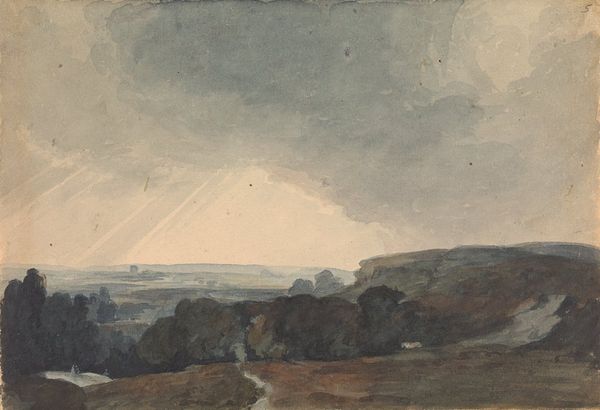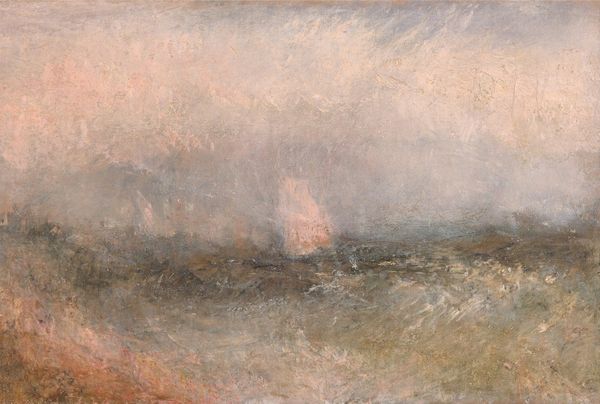
plein-air, oil-paint
#
plein-air
#
oil-paint
#
landscape
#
oil painting
#
romanticism
#
cityscape
#
realism
Copyright: Public Domain: Artvee
Editor: We're looking at Johan Christian Dahl's "The Elbe on a foggy Morning," painted around 1830. It's an oil painting that really captures a certain atmosphere. The muted colours and soft focus give it this melancholic feeling. What story does this painting tell from your perspective? Curator: It tells of shifting perceptions and the rise of a bourgeois public seeking its identity in landscape. Dahl, influenced by the Romantic era's focus on nature, was also acutely aware of the societal changes happening around him. Editor: Societal changes? How so? Curator: The Elbe River wasn’t just a picturesque view, it was a vital artery of commerce and transport. Notice how the painting’s not a dramatic vista but an intimate portrayal. This reflects the growing accessibility of art to the middle class and their desire for relatable subjects, turning the common and industrious into the sublime. Where does Dahl’s style fit? Editor: He's considered a Realist within Romanticism. Curator: Exactly. The work documents the look and feel of a moment, but also highlights the public’s growing fascination with their surroundings and the narrative embedded within seemingly ordinary landscapes. This seemingly simple river view fed into a growing sense of national and regional identity. It reminds us how art, even landscape, became a mirror reflecting society's changing self-image. Editor: I never thought about a landscape holding so much socio-political weight! It's fascinating how a foggy morning can speak volumes about the era it represents. Thanks for pointing that out. Curator: Indeed. It makes us consider whose perspectives get recorded, and whose are erased within grand historical narratives. Food for thought.
Comments
No comments
Be the first to comment and join the conversation on the ultimate creative platform.

